Today we had planned to do a little driving and hopefully wine tasting. Fred had selected a few villages that we were aiming for. Perhaps our plans are a little ambitious, but we will see how we go. A bit of driving to undertake.
Breakfast was again with our newly found Scottish friends Shiela and David. They had similar plans, with a deviation or two.
Our first stop was to be a medieval town called Montiaone. This would take us down onto the Tuscan flats from our somewhat elevated position in the hills. Our trip down into the valleys of Tuscany, highlighted a few differences to that we had seen to this point. The major activity seeming to be vineyards more that olive groves: the reverse to that in Colleoli and the hill regions. Olive groves whilst common, seemed to be well and truly in the minority. Given this, we started noting the existence of wineries: more boutique than large, perhaps family run similar to those in Australian wine regions. We were also treated to the old world charm of the region, when we came across and flock of sheep, with some goats, along with the herding dog and shepherd.
The animals seriously mowing the rather lush pasture they occupied. We both commented that this was probably a rarity in this region. The flock was quite large with perhaps about 200 sheep and goats.
Not long into our journey we came across the Corbucci Winery in an area called Gambassi Terme. We met Francesco: a vert excited man who seemed rather excited about our visit. Quickly out came some local salami and cheese.
Francesco gave us an overview of his Winery: family established and run since the the 1950s by his grandfather. The latter being his master in teaching Francesco his wine making skills. Both Fred and I were impressed as was Francesco with some of our comments and questions. He could see that we had a genuine interest in wine. From our discussion to this point, he had told us of the pests of the Tuscan region: wild boar who tend to dig and bash the vines, along with the major pest, wild deer. Deer apparently eat the early shoots of growth, which was the stage of the vintage cycle that Tuscany was currently in.
Hence, a major task of the Winery, was to set up electric fences to deter the deer. Francesco mentioned that they could lose up to 20% of their early shoots to deer. He had planned to spend today to start the electrification process.
We started our 10 wine tasting with a local Proscessco. Quite nice and so we chatted about the trends in grape growing and wine production. Damiano, the winery’s sommelier then arrived to assist in the wine tasting.
Francesco bid us farewell and so the remaining 2 hours was in the care of Damiano. The latter being quite masterful with his wine tasting knowledge: all in English. We tasted some rather exquisite wines, learning along the way about the regional appellation regulations. Quite strict: Damiano was quite proud that most of their reds and whites (the latter in minority), had appellation credibility attached.
To whet your appetite, some of the wines we tasted included:
- Vermentino a white wine which was very distinctive. I could drink a lot of this. Fred did politely suggest that I stop at the third glass.
- Vernacchio a white wine again with a distinctive taste. Both of these wines having appellation credential down to the point where the actual vineyard of source was nominated on the bottle, or could be accessed from an online data source. Some people may thin that this is omewhat over the top. But the Italians do take their wines very seriously and so the demand from the consumer seems to demand this.
- Sangiovese which is the base grape of Chianti. A series of reds tasted with different amounts of Sangiovese. To be labeled as a Chianti, at least 60% of this grape must be present. We tasted some with 100% and quite aged as well. “Red heaven”, which needed to be revisited with some additional tasting, as one the first occasion, I didn’t quite get all the nuances. Fred could see what I was up to and occasionally used the foot nudge under the table to correct my indulgence.
- Along the way, we also tasted a few blends of Cabernet Sauvignon and Merlots. These are quite rare in this region, as the dry clayey soils seem to be more suited for Sangiovese.
We could have sat there all day and chatted: I think Damiano had the same view. Unfortunately we only purchased a few bottles: this was all we could handle as our Tuscan experience was just about to finish. The wines were quite expensive by Tuscan standards. Normally, you can by a good varietal or Chianti for about €5 ($AUD8): these were triple that price.
Left left Corbucci Winery and headed for Montiaone. The village was quite small and typically on the crest of a hill. All centred around the church. Some great views over the lower areas of the valley were on offer.
LaWe walked around through the very narrow streets, most of which were one way to cater for the traffic. The houses were also very small but quaint and obviously quite old. Surrounding the village on the slopes were the ubiquitous vineyards, all starting to shoot into grape production.
Montiaone was typical of many villages we had experienced, the only difference was that this was very quiet with no tourists. Operating as it does normally, even though there was slight drizzle. Older folk sitting in caffes playing cards and using this venue as their central meeting place. All hydrating with the obligatory nespressi coffee.
From here we travelled to San Gimignano, another medieval village perched high on a hill approximately 300 metres high. Again a major strategic siting to quell potential or actual enemies. This location is a major tourist attraction and accordingly we joined the many in the small tourist oriented village.
The small narrow streets again being occupied by tourist oriented activity, supplemented by residences.n most higher areas (hills) having small and concentrated villages. One we were endeavouring to reach was Centralo. This did not eventuate: we were able to get to the newer area of this town, but missed the route to the medieval section.
From San Gimignano we travelled home, a trip of about 45 minutes through and along some very narrow roads. Once back at Colleoli we then decided to eat at the local ristorante l’Tigli. Again David and Sheila joined us for our Italian meal.
Ciao Ciao

 San Gimignano, Tuscany, Italy
San Gimignano, Tuscany, Italy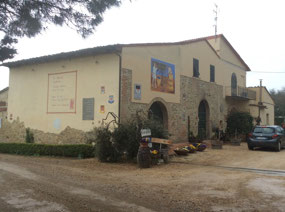
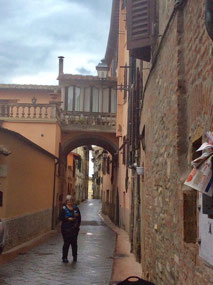
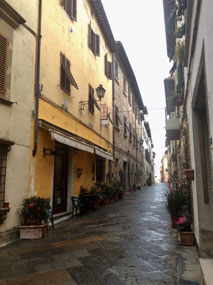
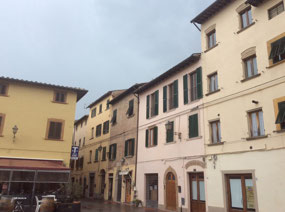
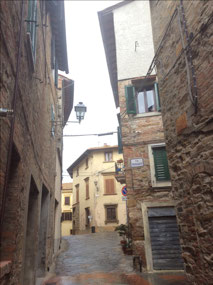







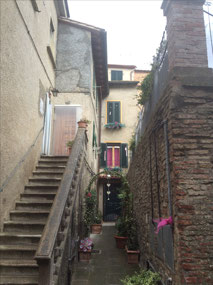


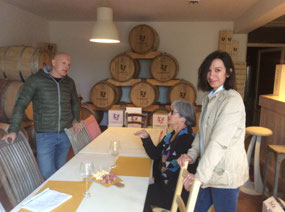

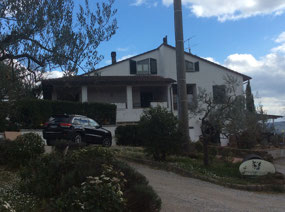
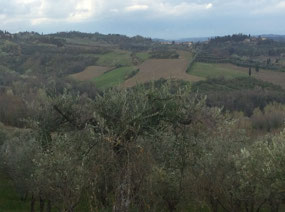

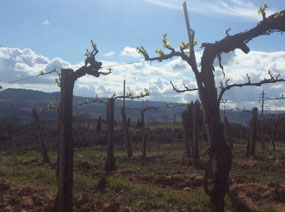
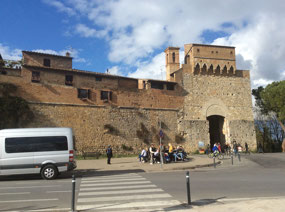
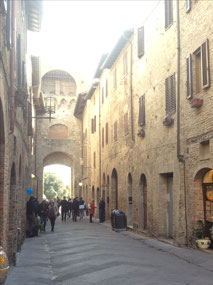
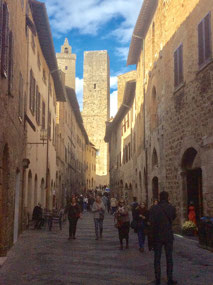
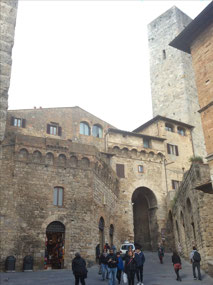

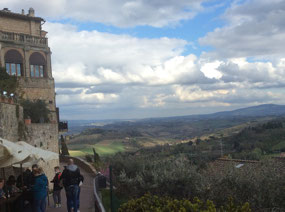
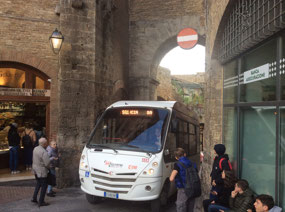
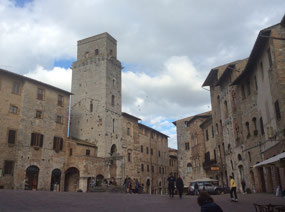
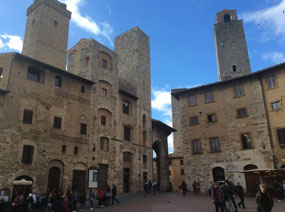

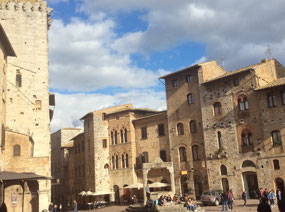
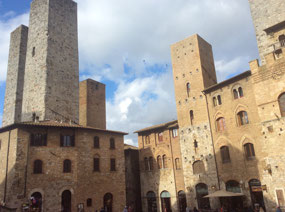



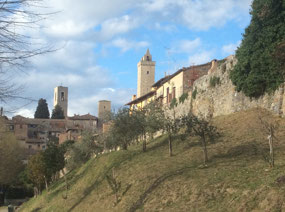
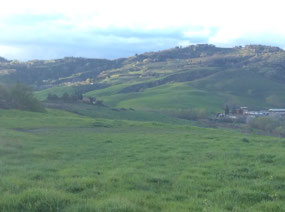

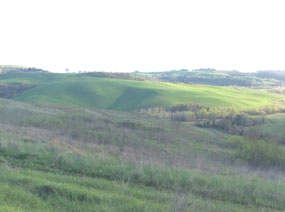

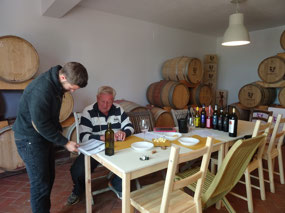
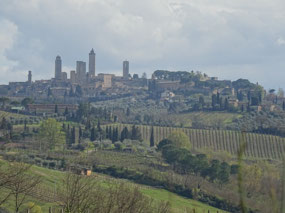
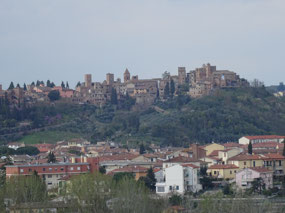
Jacquie
2019-04-26
Amazing pictures.